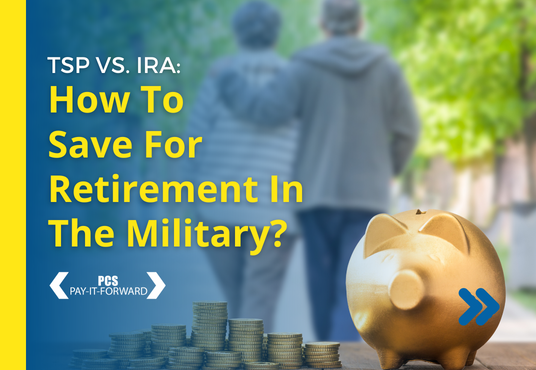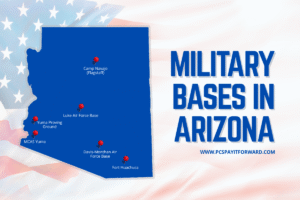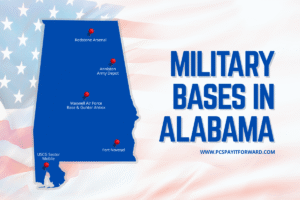One of the most important actions you can do for your financial health is to invest for your retirement. You may receive a military pension, but is that really how you want to live? Or would you prefer a little glamour in your heydays?
That’s what I thought. And that’s why it’s important to invest for your retirement now. So, the question is, which investment vehicle is best for your situation: A Thrift Savings Plan (TSP) or IRA? If you’re thinking Cool story bro, but I have no idea what you’re talking about, fear not! I gotchu. IRA = Individual Retirement Account There are two main types of Individual Retirement Accounts (IRAs): Traditional and Roth
#1. Traditional IRA: A traditional IRA is a way to save for retirement that gives you tax advantages. Contributions you make to a traditional IRA may be fully or partially deductible, depending on your circumstances, and amounts in your traditional IRA (including earnings and gains) are not taxed until distributed. Basically, you get a bit of a tax break now and don’t pay until you withdraw the money when you retire, but there are stiff penalties for early withdrawal.
#2. Roth IRA: Roth IRAs are non-deductible, which means you use post-tax money to fund your account. The amount you can contribute to a Roth IRA changes periodically, but in 2020, the contribution limit is $6,000 a year (unless you are over 50 which is up to $7,000/yr).The distributions (including earnings and gains) withdrawn when you reach retirement age are tax exempt because you already paid taxes on the money before you invested it. It’s kind of nice because of the tax free withdrawals in retirement. The money you have in the account is yours. Period. No doing the math in your head trying to figure out what your actual payout will be. (Sidenote: There are stiff penalties for withdrawing early on this one, too).
TSP = Thrift Savings Plan
Thrift Savings Plan: The Thrift Savings Plan is the same premise as a 401k, and like a Traditional IRA, money is contributed prior to taxes being withdrawn, so the money will be taxed when it is withdrawn at retirement age. The maximum annual TSP contribution limit is set at $19,500 for 2020 and like IRAs, penalties may also be incurred for early withdrawal. Where the TSP differs from IRAs is that in some circumstances, the money contributed may be eligible for a government match. However, this benefit is much more common for federal government employees than for military members because members of the military can make tax free TSP contributions with money earned while deployed to tax free zones and the funds can be tax free in retirement age. However, the earnings from the tax exempt funds will be taxable, but the principle won’t be.
Military members can also deposit any percentage of special or bonus pay, like Hazardous Duty Pay or Imminent Danger Pay. Look under the balance of your TSP account and there will be a line that says “Your Tax Exempt Balance” to find out if you have any tax exempt funds in your account.
So Which One? Well, with IRAs, everything is up to you and there’s a lot of flexibility in where to invest i.e. funds, stocks, bonds, ETFs, etc. You can open an IRA at almost any financial institution and easily set up auto-deposit, which also makes the account easy to manage. However, the downside is that all the responsibility lies with you to find investments, which isn’t for everyone. The TSP has way less options. The limited assortment of funds to choose from are 5 main funds that track major market indexes and 5 Lifecycle Funds which automatically allocate funds in different proportions based on your retirement date. But it’s easy to manage, and the fees are very low. It just lacks flexibility, if that’s what you want.
The Verdict: I’d recommend that military members first max out a Roth IRA because you’re most likely not getting a match for the TSP and this gives you some tax free retirement income. If you still have investment funds for your retirement after that, then I would recommend investing in the TSP.
However, there are two cases in which I’d recommend the TSP. If you are one of the few that are eligible for a TSP match, that’s a different story, do the TSP. The other is if you’re deployed to a tax free zone. Since your pay is non-taxable to begin with, when you contribute it to a TSP, you’re not paying any taxes on that money at all (just the gains will be taxed), so go for the TSP as well!





